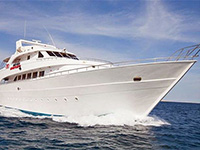Reviews: "Love the newsletters! Keep them coming" Janice Fleming...MORE REVIEWS


Soft Coral, Dendronephthya hemprichi
"Like rich rosettes of royal velvet, they decorate the rusting iron, transforming the unromantic metal stanchions into pillars that would grace a palace"
wrote Robert Gibbings on observing soft corals for the first time on his visit to Hurghada in 1938.

Soft coral on the wreck of the Carnatic in the Red Sea. Tim Nicholson
- Contents ▶
- Feeding •
- Do they build coral reefs? •
- Plant or animal? •
- Where to see Dendronephthya hemprichi •
- Identification •
- Taxonomy
The coral is Dendronephthya hemprichi (Klunzinger, 1877). This species is a pioneer settler. It can clone small fragments of itself with root-like processes that quickly attach to artificial structures like wrecks. Especially vertical structures.

As well as cloning itself, this soft coral reproduces sexually year round. They don't have synchronised yearly broadcast spawning episodes though, as many other corals do. Spawning occurs after sunset daily and continues until 2 am. They also reproduce at a younger age than other corals.
Feeding
The soft coral takes in sea water to expand its body before feeding. This builds up a positive pressure inside the coral that supports the branches and trunk.
Another difference between D. hemprichi and other corals, is that they don't depend on symbiotic algae: they are azooxanthellate (asymbiotic). Instead they feed almost exclusively on phytoplankton. Eight feathery tentacles surround the coral's mouth and whip food into it. They feed on very small plankton such as single-celled algae, rather than larger particles as had previously been thought.

D. hemprichi on Dungus reef. Tim Nicholson
Do they build coral reefs?
D. hemprichi doesn't, as far as is known, contribute to reef-building. Although they do secrete limestone. In their case this is as internal crystals called sclerites or spicules.

D. hemprichi, with yellow spicules, at Fury Shoals. Jill Studholme
Research has revealed that some parts of coral reefs though are actually made from cemented sclerites of a soft coral in the genus Sinularia.
Because soft corals do not have large skeletons, they grow faster than hard corals
Plant or Animal?
The soft coral is actually a colony of animals, each connected to its neighbour by living tissues. A single coral animal is a polyp - the attractive "flowery" projection.

Soft coral in Malapascua, Philippines. Toby Gibson/DepositPhotos
Where to see this beauty?
You find Dendronephthya hemprichi from around 10 to over 50 m, standing out from walls and wrecks in currents, in the tropical waters of the Red Sea and Indo-Pacific.
In May 2023 divers observed it for the first time in the Mediterranean, in both Israel and Lebanon. Because it can settle quickly on surfaces and reproduce rapidly by cloning, and as the sea is warming, it may soon be common in the Mediterranean as well. This is worrying because as an invasive species here, it may disrupt the native ecosystems. Animals from the highly biodiverse Red Sea are often more competitive than native Mediterranena species. It probably arrived in the Mediterranean through the Suez Canal, like so many other species.
Israeli scientists writing in the journal Biology in 2023 point out:
"Amidst the doomsday predictions of a collapsing ecosystem, bio-invasions in the Mediterranean Sea can also be observed through rose-colored glasses. As the Mediterranean Sea is a remnant of the Tethys Ocean, from a historical perspective, the changes observed can also be viewed as a return to the sea's tropical origins"
Their defence mechanisms & drug research potential
Soft corals inhabit competitive and extreme environments and produce many metabolites, like steroids, as a defence mechanism. Scientists have found in Dendronephthya hemprichi organic acids, aldehydes, esters, carotene, and various derivatives of these compounds which have antibacterial, antioxidant and cancer-preventative properties. They are a significant focus in drug research due to their production of numerous bioactive compounds with potential therapeutic applications.
Identification of Soft Coral
In D. hemprichi you can clearly see the brightly coloured spicules within its body. The individual polyps have 8 feathery tentacles, which helps confirm identification. These polyps are in bundles of 6 to 11 protruding from a brancheds, translucent stem. The branches tend to be on a single plane. They are usually below 10 m in currents and brightly coloured red, yellow, orange or pink. It is this soft coral that contributes so much to the beauty of the reef.
Sometimes confused with the similar D. klunzingei. This coral though is: generally pink; has polyps in groups of 1 to 3; grows on overhangs in shallow water or in the open deeper; branches in around body not in single plane.

Dark blue marks D. hemprichi distribution, extending into Israel and the Lebanon in the Mediterranean. Adapted from GISGeography
Taxonomy
Phylum: Cnidaria > Class: Anthozoa > Subclass: Octocorallia > Order: Alcyonacea > Family: Nephtheidae > Genus: Dendronephthya > Species: Dendronephthya hemprichi
References and Further Reading
Tama N (2023) On the Presence of the Non-Indigenous Three Soft Coral Dendronephthya sp. in the Lebanese Waters, Eastern Mediterranean Sea. J Fisheries Livest Prod 11: 481.
Ghandourah, Mohammed A. "Cytotoxic ketosteroids from the Red Sea soft coral Dendronephthya sp." Open Chemistry, vol. 21, no. 1, 2023. https://doi.org/10.1515/chem-2022-0327
Soft coral is reef building, SCUBA News
Blue Angels and Whales, by Robert Gibbings 1938
K Fabricus, Y Benayahu, A Genin, Herbivory in Asymbiotic Soft Corals. Science, April 1995, Volume 268
M Dahan, Y Benayahu. Clonal propagation by azooxanthellate octocoral Dendronephthya hemprichi. Coral Reefs (1997) 16:5-12
P Vine. Red Sea Invertebrates, Immel Publishing.
By Jill Studholme, 26 June 2024
Update this page
Suggest an update here. Please provide references for your information. Thanks.

